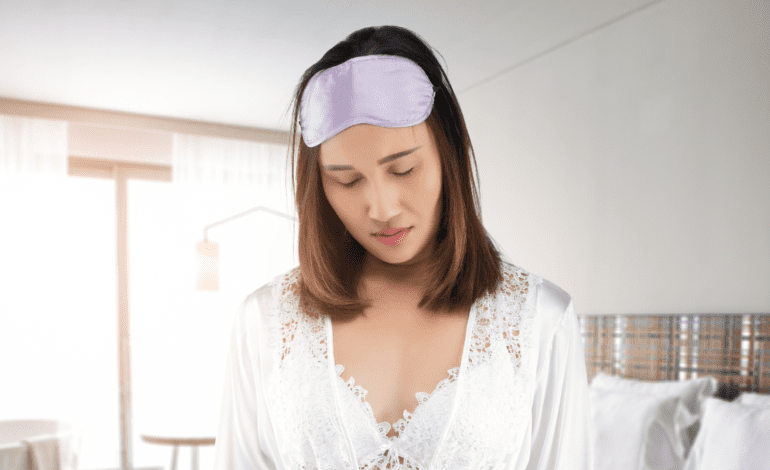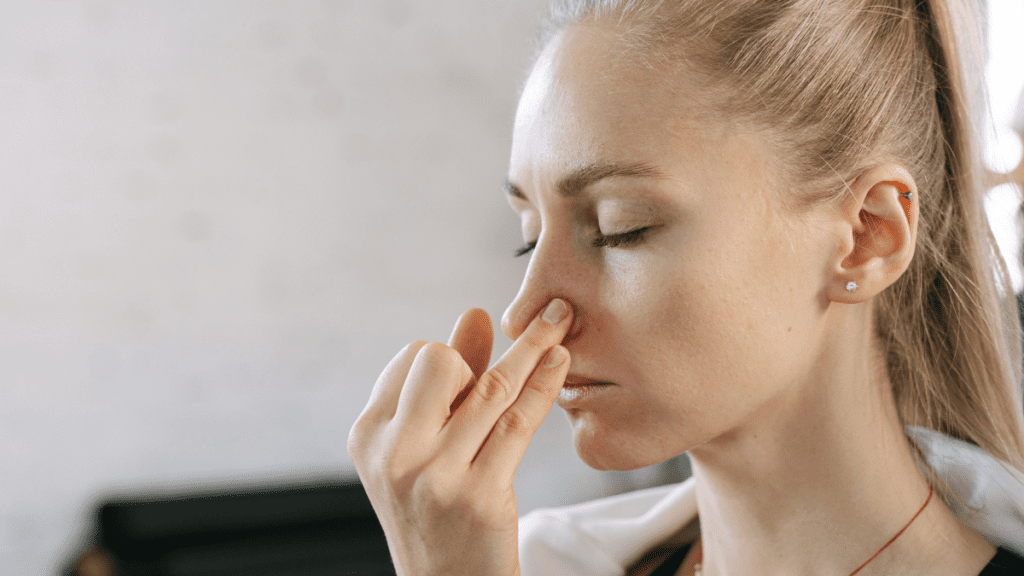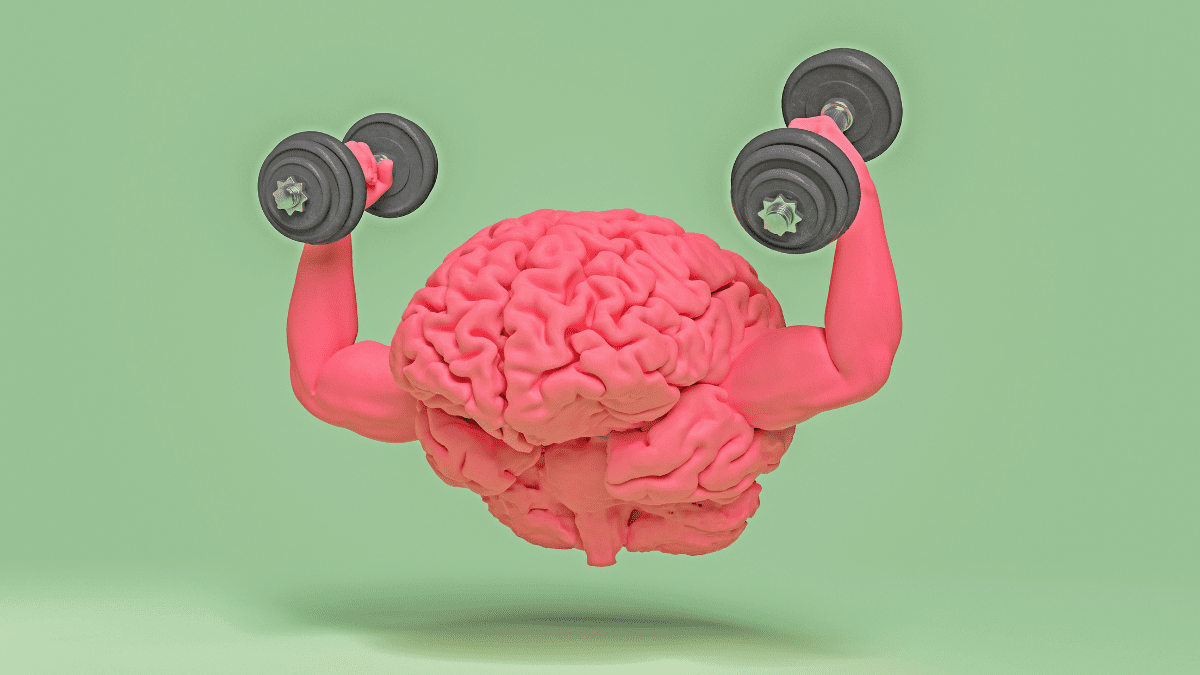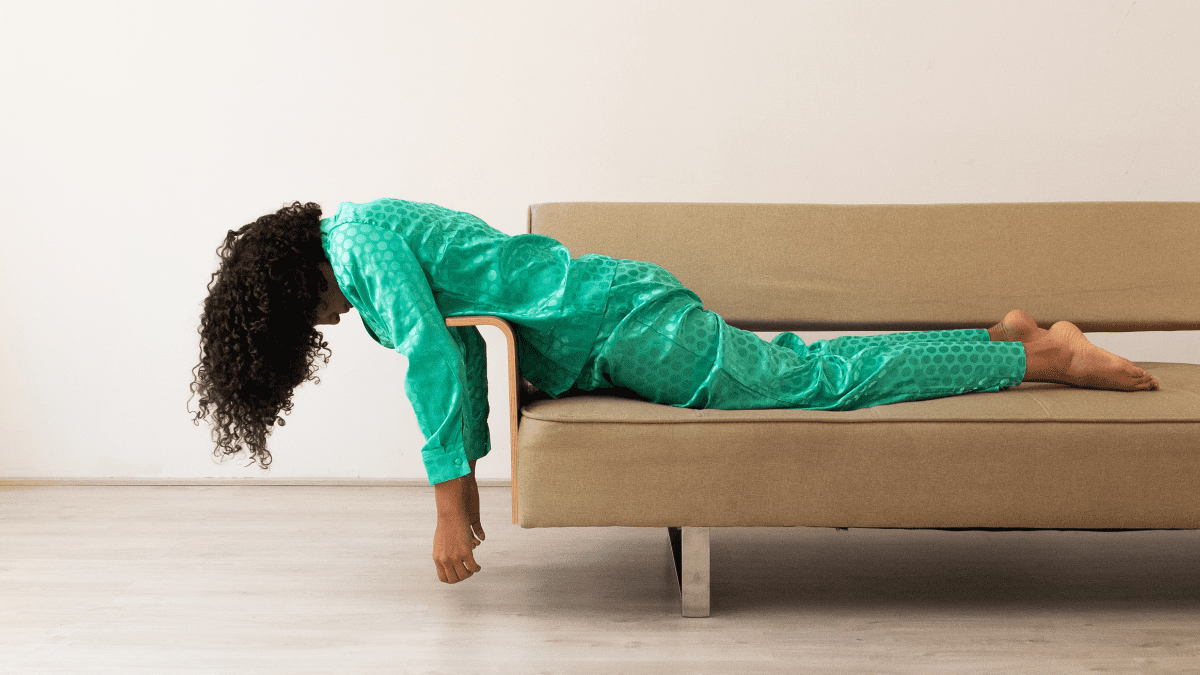ADHD-Friendly Morning Routine That Transforms Your Day Now
An ADHD-friendly morning routine can shift everything. Reclaim your energy, focus, and peace with rituals that soothe your body, calm your brain, and truly stick.

In This Article
- What Is an ADHD-Friendly Morning Routine—and Why It Matters
- Building the Foundation: Why an ADHD-Friendly Morning Routine Matters
- Start Soft: Sensory-Friendly Rituals to Anchor Your Morning
- Move Before You Plan: Releasing Stagnation to Find Clarity
- Nourish to Stabilize: Breakfast Rituals That Actually Support You
- Transition With Intention: Shaping a Morning You Can Trust
- Conclusion: One Step, One Morning at a Time
- ADHD-friendly Morning Routine — FAQ
What Is an ADHD-Friendly Morning Routine—and Why It Matters
Are You Starting the Day in Survival Mode?
If mornings leave you overwhelmed, scattered, or already behind, you’re not alone. Many people with ADHD wake up into chaos—before the day even begins. That’s exactly where an ADHD-friendly morning routine comes in. Instead of forcing productivity, it gently supports your nervous system, so you can move through the morning with clarity and calm.
Traditional routines often fail ADHD brains because they’re built for consistency, not flexibility. But your brain isn’t wired for rigidity. It’s wired for rhythm, stimulation, and emotional safety. That’s why gentle, sensory-friendly habits—when practiced consistently—can change everything.
This guide will walk you through a practical, layered approach to morning routines that feel nourishing, not punishing. From regulating your nervous system to stabilizing your energy and focus, you’ll discover tools that are flexible, healing, and sustainable. Whether you’re newly diagnosed or just seeking more peace in your mornings, there’s a way to start the day that finally works for you.
And if you’re ready to reset more than just your mornings, you’ll love our deeper dive into holistic health and nervous system balance. Because how you begin your day shapes everything that follows—and when you start from safety, you start from strength.
Let’s begin.
Building the Foundation: Why an ADHD-Friendly Morning Routine Matters
Why Is an ADHD-Friendly Morning Routine So Important?
If mornings overwhelm you, there’s a reason for it. With ADHD, waking up can often feel harsh and disorienting. That’s because your brain transitions differently. It struggles to move from restful sleep to active wakefulness. Without support, mornings become chaotic, scattered, and stressful. An ADHD-friendly morning routine is crucial because it gently bridges this transition. Rather than shocking your nervous system awake, it offers gentle steps, calming practices, and sensory-friendly tools. Over time, these small adjustments help your brain feel safer and your days smoother.
How Do Sleep Patterns Affect Your ADHD-Friendly Morning Routine?
Sleep is fundamental for everyone, but with ADHD, it gets complicated. Many with ADHD experience something called Delayed Sleep Phase Syndrome (DSPS). This condition means you naturally fall asleep later—and struggle to wake earlier. As a result, your body misses vital restorative sleep, making mornings even tougher. To shift this gently, you might:
- Set consistent bedtime rituals.
- Avoid blue-light screens close to bedtime.
- Create a calming sleep environment (cool, dark, quiet).
By doing this regularly, your internal clock resets slowly, making your ADHD-friendly morning routine more achievable.

Why Does Sensory Overload Disrupt Your Morning?
Sensory sensitivities can dramatically impact your mornings. Bright lights, loud alarms, scratchy clothes—these can all trigger overwhelm before your day even begins. Many with ADHD are highly sensitive to sensory input, especially right after waking. To create an ADHD-friendly morning routine that truly works, consider simple sensory changes:
- Swap loud alarms for gradual, gentle sounds.
- Use softer lighting like dimmable lamps or natural sunlight.
- Choose comfortable, non-irritating clothing to start your day.
These small shifts make a huge difference. They lower sensory stress and help your nervous system stay calm.
How Can Light Therapy Support You?
Light therapy can significantly ease mornings with ADHD. It gently resets your body’s internal clock and reduces morning grogginess. According to experts, exposure to morning sunlight or therapeutic light boxes improves alertness, mood, and energy levels. By incorporating light therapy for ADHD into your morning routine, waking becomes easier and smoother.
Start Soft: Sensory-Friendly Rituals to Anchor Your Morning
How Do Sensory Rituals Improve Your ADHD-Friendly Morning Routine?
If your mornings feel overwhelming, sensory rituals can change everything. Often, with ADHD, your nervous system is extra sensitive, especially after waking. The slightest stimulus—a harsh alarm or bright lights—can trigger stress instantly. By choosing sensory-friendly rituals, you gently guide your nervous system into wakefulness. As a result, your ADHD-friendly morning routine feels calming and supportive, not exhausting.
Instead of fighting your sensitivity, you start to honor it. Each sensory ritual sends a signal: you’re safe here. And gradually, your mornings become peaceful, intentional, and deeply grounding.
What Gentle Awakening Tools Can Support Your ADHD-Friendly Morning Routine?
The way you wake up profoundly shapes your entire day. Rather than shocking yourself awake, aim for a gentle transition. Soft awakening tools create ease and reduce sensory overload. Here are some powerful yet gentle options:
- Gradual alarms: Instead of loud, sudden noises, use apps or alarm clocks with slowly rising sounds.
- Natural light: Allow morning sunlight to wake you gradually, or use therapeutic light boxes if natural light is limited.
- Warm beverages: Drinking warm water or herbal tea first thing can soothe your nervous system.
- Comfort-focused textures: Choose soft, cozy clothes or a comfortable blanket to support sensory comfort immediately upon waking.
These tools form the heart of your ADHD-friendly morning routine. They reassure your brain that mornings don’t have to be harsh or stressful.
How Can Breathwork Enhance Your Routine?
Breathwork is simple but powerful, especially for ADHD. It quickly settles your mind, reduces anxiety, and increases focus. By integrating short breathing exercises into your morning routine, you anchor yourself firmly into the present moment. Some effective, ADHD-friendly breathwork practices include:
- Box breathing: Inhale for 4 seconds, hold for 4, exhale for 4, hold again for 4. Repeat several times.
- Extended exhale breathing: Breathe in deeply for 4 seconds, and slowly exhale for 6-8 seconds to calm your nervous system.
- Mindful breathing: Just spend 2-3 minutes noticing your natural breath, gently guiding your mind back whenever it wanders.
Over time, breathwork becomes your go-to strategy for clarity and calm. It transforms mornings from chaotic to focused in just a few breaths.

How Can You Design Your Environment?
Your environment deeply influences your emotional state, especially in the morning. Making your space sensory-friendly instantly lowers stress and encourages calm. Try these supportive adjustments:
- Dimmable or soft lights: Harsh lighting overstimulates your nervous system. Opt for gentle lamps or natural morning sunlight.
- Calming scents: Diffuse soothing essential oils like lavender, bergamot, or cedarwood to ground your senses.
- Reduce clutter: Even small visual clutter can overwhelm the ADHD brain. Clear surfaces the night before to create morning ease.
According to research, creating a sensory-friendly environment for ADHD significantly improves emotional stability and executive functioning.
Move Before You Plan: Releasing Stagnation to Find Clarity
What Role Does Movement Play in Your Routine?
Movement might feel counterintuitive when you’re tired, yet it’s essential for ADHD brains. Rather than immediately jumping into planning your day, moving your body first can dramatically shift your energy. With ADHD, your dopamine levels naturally fluctuate, making motivation and focus challenging. By engaging in gentle movement, you naturally boost dopamine, stabilize mood, and clear mental fog. Consequently, your ADHD-friendly morning routine becomes more effective, calming, and energizing.
Additionally, movement signals safety to your nervous system. Instead of feeling pressured by tasks ahead, you create space to reconnect with your body. Gradually, mornings feel less overwhelming and more inviting.
Which Simple Movements Support Your Day Best?
You don’t need high-intensity workouts to benefit from morning movement. Often, simpler is better, especially if you wake up fatigued. Choosing movement rituals that feel nourishing rather than draining is key. Consider incorporating one or more of these gentle, ADHD-friendly practices:
- Gentle yoga: Even five minutes of stretching helps reduce anxiety, boost dopamine, and center your thoughts.
- Slow, rhythmic walking: A short walk around your home or garden can gently stimulate your nervous system.
- Intuitive stretching: Trust your body’s natural impulses to stretch, twist, or sway in ways that feel grounding.
- Stim-focused movements: If stimming is natural for you, intentionally lean into rhythmic motions like rocking or bouncing to soothe your nervous system.
By focusing on gentle rhythms instead of intensity, you cultivate a sense of calm clarity each morning.
How Can Mindful Movement Transform Your ADHD-Friendly Morning Routine?
Mindfulness isn’t limited to meditation. For ADHD, mindful movement often feels more accessible and natural. When you move mindfully, you gently train your brain to slow down and stay present. Over time, this practice significantly enhances emotional regulation and attention. You might:
- Focus deeply on sensations while stretching, noticing subtle shifts in your body.
- Coordinate slow breathing with movement, like pairing breath cycles with gentle yoga poses.
- Pause briefly after each movement to appreciate how your body feels in stillness.
In this way, mindfulness becomes an embodied experience, creating calm and centeredness from the inside out.
What If You Struggle with Consistency?
Consistency is often tricky with ADHD. Therefore, aim for flexibility over perfection. Instead of rigid schedules, choose adaptable rituals that you can practice in varying ways. You could:
- Vary the duration of your practice depending on your energy.
- Rotate between movement types to maintain interest.
- Use gentle reminders or visual cues to prompt your morning movements.
Experts agree that incorporating mindful movement for ADHD can significantly reduce stress and improve executive functioning.
Nourish to Stabilize: Breakfast Rituals That Actually Support You
Why Does Breakfast Matter?
You might feel tempted to skip breakfast, especially if mornings already feel chaotic. Yet, nourishing your body first thing can dramatically improve your focus, mood, and energy. With ADHD, blood sugar fluctuations greatly affect your mental clarity. When you skip meals, your energy and focus suffer quickly. However, starting the day with a balanced meal helps stabilize blood sugar, reducing mood swings and brain fog. As a result, your ADHD-friendly morning routine becomes more consistent and calming.
Additionally, breakfast supports dopamine production. Dopamine is crucial for motivation and attention—two areas often challenging for ADHD brains. By prioritizing breakfast, you’re actively supporting your brain chemistry.
Which Foods Best Support You?
Not all breakfasts offer equal benefits. For ADHD, certain foods are especially helpful because they keep energy steady and fuel your brain effectively. Instead of sugary cereals or quick carbs, try building breakfast around:
- High-protein foods: Eggs, Greek yogurt, protein smoothies, or cottage cheese stabilize blood sugar and reduce hyperactivity.
- Healthy fats: Avocados, nuts, seeds, or nut butter nourish brain cells and enhance cognitive function.
- Fiber-rich carbohydrates: Oats, whole-grain toast, or berries provide steady, sustained energy without sugar crashes.
By combining these three elements, you create meals that genuinely nourish your brain. Gradually, your mornings will feel clearer, calmer, and more grounded.
Not sure what to eat after waking? Fuel your focus with these ADHD nutrition tips rooted in balance and brain health.
What Role Do Supplements Play in an ADHD-Friendly Morning Routine?
Food is foundational, but supplements can also play a helpful role. When mornings are rushed, or your appetite is low, supplements ensure you’re still giving your brain crucial nutrients. Particularly beneficial supplements include:
- Omega-3 fatty acids: Essential for attention and emotional regulation.
- Magnesium glycinate: Helps calm the nervous system and reduces anxiety.
- Vitamin B-complex: Supports energy, mood, and focus by nourishing your nervous system.
Remember, supplements work best alongside balanced meals, not as replacements. Before starting a new supplement routine, consult with a trusted healthcare provider to tailor your choices effectively.
Looking for herbal support too? Discover the focus-boosting power of Bacopa for ADHD — a gentle, time-tested plant medicine.
How Can You Make Breakfast Easier?
Planning ahead simplifies your mornings dramatically. With ADHD, decision fatigue can easily derail healthy habits. Reduce morning stress by:
- Preparing simple breakfasts in advance (overnight oats, protein muffins).
- Keeping breakfast ingredients visible and easy to access.
- Setting gentle reminders for meal times.
These small steps remove friction, making nutritious eating easier and more automatic each morning.
Research consistently highlights the connection between diet and cognitive function. Incorporating an ADHD-friendly breakfast into your daily routine significantly enhances mood, memory, and attention.
Transition With Intention: Shaping a Morning You Can Trust
Why Do Intentional Transitions Support Your ADHD-Friendly Morning Routine?
Transitions often feel chaotic for the ADHD brain. Moving from sleep to activity—or from home to work—can quickly overwhelm you. Yet, with a little intention, you can smooth these shifts into gentle, manageable moments. Intentional transitions reduce stress, increase clarity, and help your brain move more fluidly between tasks. By thoughtfully structuring these shifts in your ADHD-friendly morning routine, you create a reliable rhythm, making mornings feel more secure and predictable.
When transitions feel safe, your nervous system settles. Instead of bracing for stress, your brain can anticipate ease. Gradually, mornings transform from a dreaded experience into a trusted anchor for your day.
What Visual Tools Can Support You?
ADHD brains often thrive with visual support. While lists can help, visual cues tend to be far more effective. They reduce overwhelm by offering clear, immediate guidance without excessive effort. Consider these visual tools to simplify transitions:
- Visual calendars: Display your morning tasks visually to clearly define your routine.
- Color-coded cues: Use colors to highlight priorities or differentiate tasks.
- Visual timers: Time-blindness is common with ADHD; visual timers provide gentle accountability and clear boundaries.
By incorporating visuals, you support your executive functioning, making morning transitions smoother and less stressful.
How Does Buffer Time Enhance Your ADHD-Friendly Morning Routine?
Buffer time is essential, especially with ADHD. Tight schedules create anxiety and raise cortisol levels, negatively impacting focus and mood. To reduce this pressure, intentionally add buffer time into your routine. Here’s how to implement this easily:
- Allow extra minutes: Instead of scheduling tasks back-to-back, include 5–10 minutes of flexible downtime.
- Gentle reminders: Set alarms not only for tasks but also for buffer periods to gently signal upcoming transitions.
- Slow down intentionally: Use buffer time to breathe, hydrate, or recenter before shifting tasks.
Buffer time creates spaciousness, allowing your brain to relax. Consequently, transitions feel safer, easier, and more manageable.
Why Is Flexibility Crucial?
Flexibility matters because rigidity rarely serves ADHD well. Strict routines quickly become overwhelming, leading to burnout. Rather than forcing yourself into rigid rituals, cultivate gentle, adaptable rhythms instead. Here’s how you can maintain flexibility:
- Adapt rituals based on energy: Modify your morning routine according to your daily energy levels.
- Include alternate options: Have several rituals to choose from, so your routine stays interesting and fresh.
- Adjust expectations: Let go of perfection and embrace what feels nurturing in the moment.
Studies show that flexible routines, known as gentle scheduling for ADHD, significantly improve mental well-being, reduce stress, and enhance productivity.
Conclusion: One Step, One Morning at a Time
An ADHD-friendly morning routine isn’t complicated or overwhelming—it’s practical, gentle, and designed for your unique brain. By incorporating sensory-friendly rituals, mindful movement, nourishing breakfasts, and intentional transitions, you shape mornings that support rather than stress you.
To begin, pick one or two simple practices you can comfortably manage:
- Set your alarm 10 minutes earlier to add gentle buffer time.
- Start your day with protein-rich foods to balance mood and energy.
- Choose soft lighting or a gradual alarm to wake peacefully.
- Incorporate mindful breathing or stretching for 5 minutes each morning.
Consistency matters, but perfection doesn’t. If your morning doesn’t go as planned, simply restart gently tomorrow. Gradually, your nervous system learns to anticipate calm instead of chaos. With each small adjustment, mornings feel less daunting and more empowering.
For further support, explore our guide on holistic health and well-being to deepen your understanding of nervous system care and holistic wellness.
Remember, you’re not adapting your brain to fit the routine—you’re creating a routine that fits your brain. Every mindful ritual is a step toward greater self-trust, clarity, and emotional ease.
Tomorrow morning, choose just one ritual and notice the difference. You have the tools; now trust yourself to use them gently, consistently, and compassionately. Because meaningful transformation always happens one intentional morning at a time.
ADHD-friendly Morning Routine — FAQ
What is the best breakfast for ADHD focus and energy?
The ideal ADHD breakfast includes protein-rich foods, healthy fats, and fiber-rich carbs. Try eggs with avocado, protein smoothies, oatmeal with nuts, or Greek yogurt with berries to stabilize your energy and mood throughout the day.
How can I improve ADHD sleep and wake up feeling refreshed?
Make waking easier by using gradual alarms, natural or gentle lighting, and consistent bedtimes. Light therapy can also help reset your internal clock, reducing morning grogginess and making it easier to start the day.
What are the easiest morning habits for ADHD time management?
Consistency happens best with simplicity and flexibility. Choose just two or three easy rituals, set visual reminders, allow extra buffer time, and remain adaptable rather than rigid. Consistency grows naturally from comfort and ease.
Created by Lili Vu, holistic health & nutrition coach in training. Deeply passionate about mind-body healing, nourishment, and intentional living — practices I’ve lived, tested, and continue to grow through. Embracing my ADHD and supporting my partner through a life-altering stroke transformed how I understand the nervous system, resilience, and healing. I explore holistic well-being practices including yoga, plant-based nutrition, gut and hormone health, trauma recovery, and mindful habit change — all rooted in my personal healing journey. 🌿







